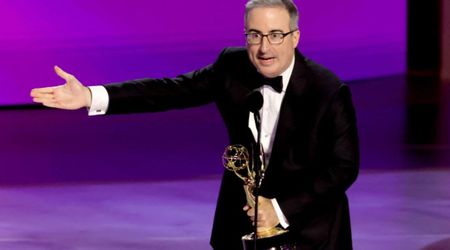How did Harold Budd die? A look at iconic ambient composer's life before his death at 84 from Covid-19

Harold Budd, the ambient music composer, a shapeshifter of minimalism and jazz, a pioneer for avant-garde music and a prolific poet, died at the age of 84 on December 7. Robin Guthrie of Cocteau Twins, who released an album with Budd last week titled ‘Another Flower’, confirmed the news over social media while mourning the demise of ‘The Pavilion of Dreams’ maker. He stated on Facebook, "A lot to digest. Shared a lot with Harold since we were young, since he was sick, shared a lot with harold for the last 35 years, period. Feeling empty, shattered lost and unprepared for this, as do my wife Florence and girls Violette and Lucy Belle."
"All my best to Elise, Terrance, Hugo and all the family. His last words to me were 'adios amigo'... They always were.. He left a very large 'harold budd' shaped hole whichever way we turn…," Guthrie wrote.
Budd’s death resulted from Covid-19 complications, a report stated. His manager Steve Takaki confirmed to a publication that the legendary pianist’s demise occurred from complications due to the coronavirus.
Born in 1936’s Los Angeles, Budd was drawn towards jazz from the early days but he started his musical career as a drummer. His bio says: “Harold Budd had music ingrained from childhood, be it the Protestant hymnals sung in church, the Mariachi music from East LA, or the strains of the harmonium the he recalled his mother played so beautifully.” The economic strain and struggle from Budd’s early days drew him more towards jazz and Black culture as he later said, “Black culture that freed me from the stigmata of going nowhere in a hopeless culture".
Budd started taking a class in music theory from Los Angeles Community College at the age of 21. “From that moment on,” he recalls, “I had an insatiable appetite. Harmony, counterpoint, Renaissance music: I really heard it for the first time.” The influence of John Cage, the most influential composer of the 20th century, also made an impact on Budd in the early ’60s. He said, “John Cage had an enormous impact on me — but I must say more through his writings and the example of his lifestyle than through his music. He showed us that it was possible to be an artist without selling out to the academy, and to go directly into art itself. That was an important heroic posture for almost all American artists at that time.”
In 1966, Budd presented an orchestral piece ‘Rothko’ which at the time was criticized as “rhythmically too complex and could not be done”. The piece was influenced by Mark Rothko, an abstract expressionist painter. After a brief period of “minimalized myself out of existence”, Budd resurfaced in 1972, and his first album 'The Pavilion of Dreams' was released in 1978. One of the unique musical inspirations that made Budd stand out was the way he perceived the answer to the problems of "sterile" avant-garde music in the tight structures of minimalism, as he started to bring his music back to the bare minimum and tonal essentials.
In 1980, he started working with Brian Eno and made 'Brian Eno Ambient 2: The Plateaux of Mirror' (1980) and also worked with Daniel Lanois, created ‘The Pearl’ (1984) which is regarded as landmark albums in the emerging musical genre of ambient music. Personally, Budd hated calling his music ‘ambient’ as he once said, “it’s meant to mean something, but is in fact, meaningless. I don’t think about genres. I don’t think about labels: they don’t have meanings.”
With Robin Guthrie, Budd produced ‘The Moon and the Melodies’ in 1986, his first venture in popular music. He continued working on solo music like ‘Lovely Thunder’ in 1986 where he introduced certain electronic textures. In 2000, he returned to his root of minimalistic approach and produced 'The Room' and in Daniel Lanois, the renowned producer of U2 and Bob Dylan, and occasional collaborator with Brian Eno, recorded an impromptu performance of Harold playing the piano in his Los Angeles living room, unaware, and thus realized the album 'La Bella Vista'.
Budd has also produced original scores of movies with Guthrie such as ‘Mysterious Skin’ (2005) and ‘White Bird in a Blizzard’ (2014). He has collaborated with a number of legendary artists including but not limited to XTC’s Andy Partridge, Ultravox’s John Foxx and Public Image Ltd’s Jah Wobble. He was also anointed as the 24th of 30 Icons of Echoes.










